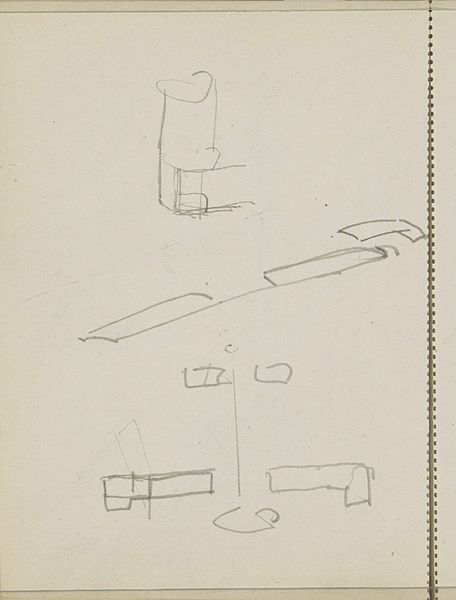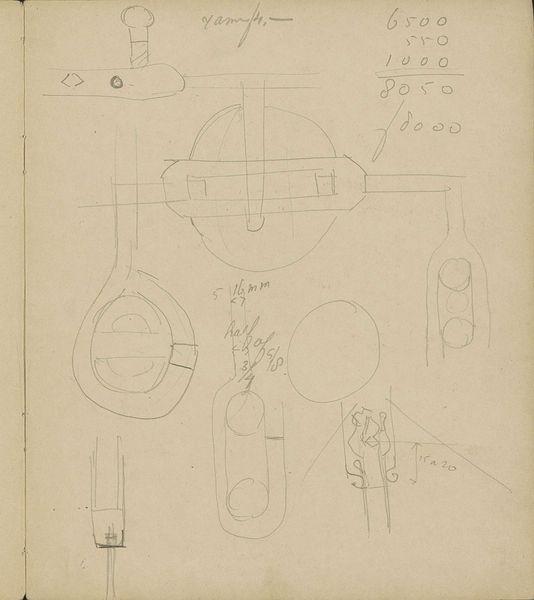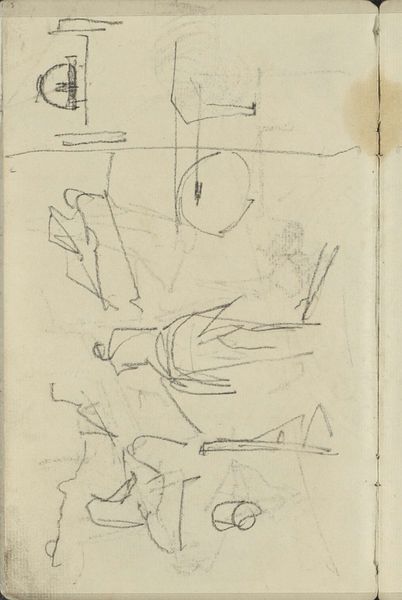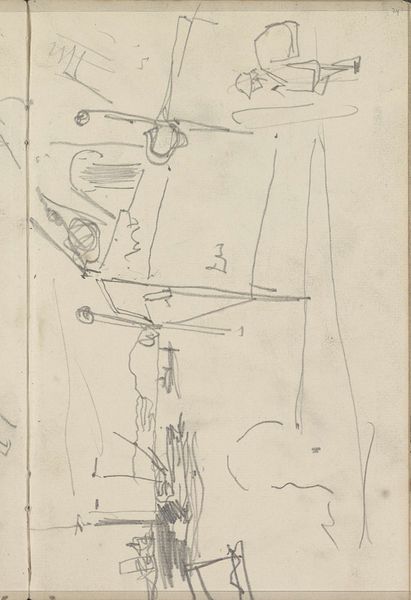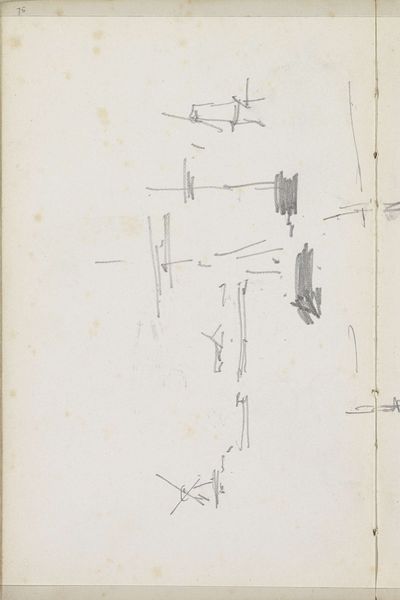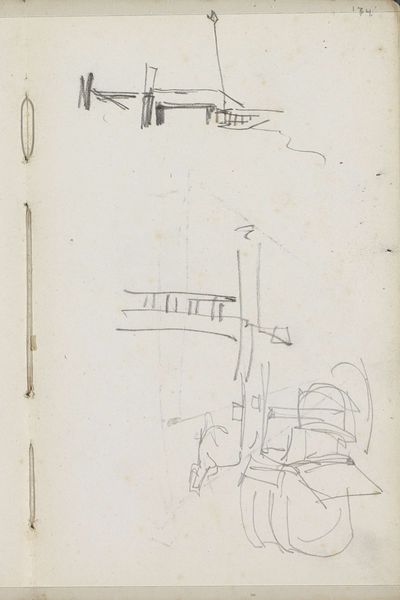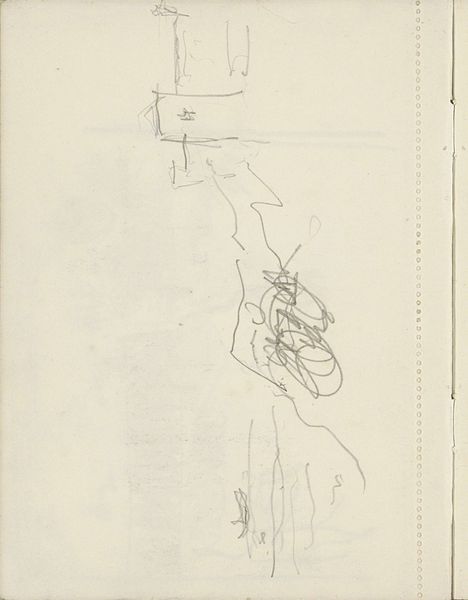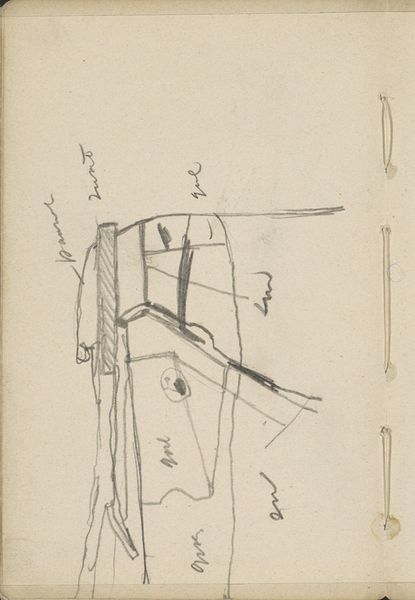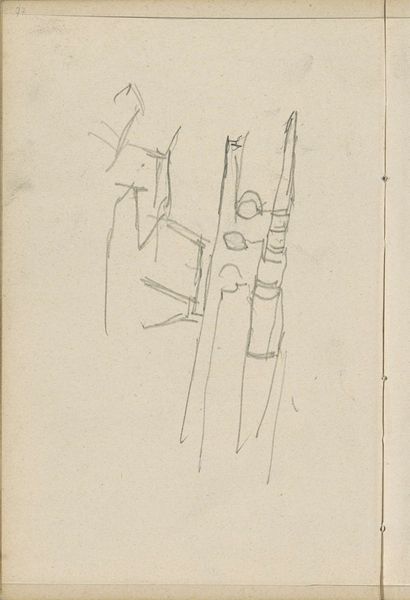
drawing, paper, pencil
#
drawing
#
aged paper
#
light pencil work
#
art-nouveau
#
quirky sketch
#
sketch book
#
paper
#
form
#
personal sketchbook
#
idea generation sketch
#
sketchwork
#
geometric
#
pencil
#
line
#
sketchbook drawing
#
sketchbook art
#
initial sketch
Copyright: Rijks Museum: Open Domain
Editor: Here we have Carel Adolph Lion Cachet’s “Scharnieren,” which translates to "Hinges," created around 1906 using pencil on paper. It looks like a page torn from a personal sketchbook. What do you see in this seemingly simple study of mechanical forms? Curator: What immediately strikes me is how even simple hinges can become imbued with meaning when placed on the page like this. They aren't merely functional; they become symbols. The hinge represents connection, but also articulation, movement, even the possibility of change. What did “hinges” represent in 1906? Editor: Change? Social mobility? New mechanical age perhaps? Curator: Perhaps all those things. Notice how Cachet isolates each hinge, almost like presenting variations on a theme. Each one, although similar, possesses a unique configuration. That isolated repetition creates rhythm. But let me ask you, what feeling is conjured up by looking at these somewhat cold technical sketches on the page? Editor: Well, I initially thought these drawings feel sort of...unfinished and detached. But considering them as symbols changes the whole picture. Each isolated hinge might imply different methods of change or the various mechanisms that enable social reform? Curator: Exactly. This artist is almost treating mechanical design as a form of language, one filled with as much symbolic potential as traditional iconography. He could then employ design elements in painting or sculpture. It may even relate to Art Nouveau preoccupation with both organic and geometric forms. These "hinges," therefore, represent far more than just joining; they symbolize possibilities. Editor: I see them in a new light now! They are like a collection of different answers to one fundamental question about joining things, but also transforming how the message changes when we move them around! Curator: And that shifting significance— that's where the power of symbolic imagery truly lies, to give the user of the mechanism an emotive or empowering meaning for the objects of their life. Editor: Thanks; it has certainly opened my eyes to the depth even in something that seems initially simple.
Comments
No comments
Be the first to comment and join the conversation on the ultimate creative platform.
